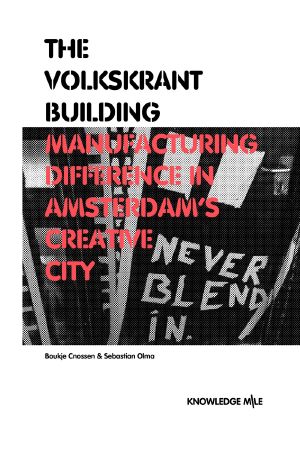The Volkskrant Building · Manufacturing Difference in Amsterdam’s Creative City

- Authors
- Cnossen, Boukje & Olma, Sebastian
- Publisher
- Amsterdam Creative Industries Publishing, Rose Leighton
- Tags
- eighties , scene , interviews , knowledge mile , club , movement , squatting , production , creativity , hogeschool van amsterdam , sebastian olma , city , amsterdam , capital , history , infrastructure , citizenship , entrepreneur , municipality , hotel , peter sloterdijk , richard sennett , artists , activism , philosophy , transformation , boukje cnossen , broedplaats , volkskrant building , amsterdam creative industries network , property developer , creative class , network , art factory , creative industries
- Date
- 2014-11-01T00:00:00+00:00
- Size
- 4.75 MB
- Lang
- en
The Volkskrant building more than any other place exemplifies
Amsterdam’s transformation into a ‘creative city’ over the past fifteen
years. Boukje Cnossen and Sebastian Olma trace the history of this
infamous and inspiring place from its deep roots in the squatting heyday
of the eighties to its present renaissance as the Volkshotel. The focus
of their entertaining yet rigorous analysis is the period from 2007 to
2014 when the Volkskrant building hosted an art factory ()
run by the former squatters collective Urban Resort.
Artists, activists, city officials, entrepreneurs, and property
developers share their stories of the good times and the struggles in
and around the Volkskrant building. How did a group of former squatters
turn it into a place for both creative entrepreneurship and subversion?
And how could it happen that this countercultural project ended up
attracting the attention of one of the largest property investors in the
Netherlands?
This detailed inquiry into the practices and interests shaping the
epicenter of Amsterdam's creative scene provides a look behind the shiny
façade of creative city policy. The authors show how the Volkskrant
building came to be more than a space for creativity alone, as it opened
up the possibility for a new infrastructure of citizenship.